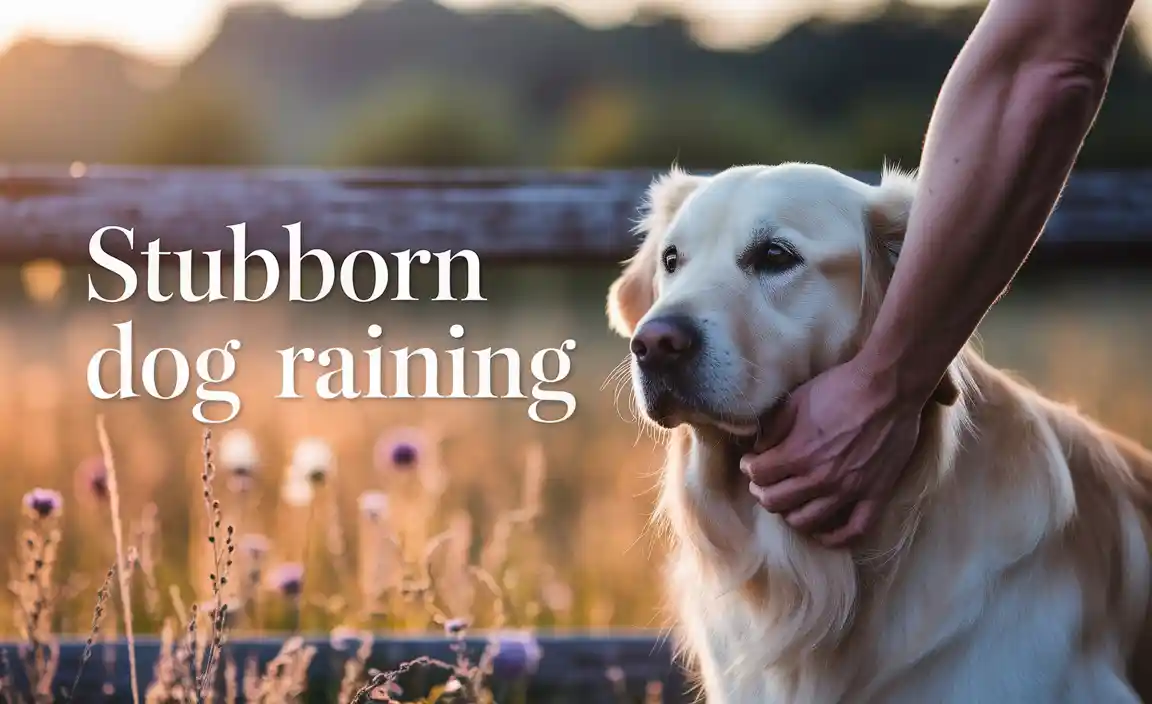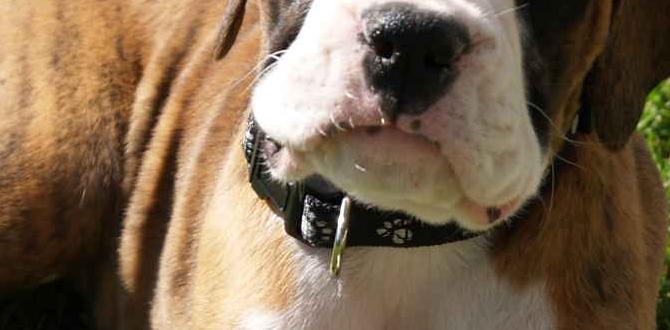Stubborn Dog Training: Easy Step-by-Step Guide
Navigating the world of dog ownership can be incredibly rewarding, but it also comes with its unique set of challenges. One of the most common hurdles many owners face is dealing with a dog that seems stubbornly set in their ways. Whether it’s an unwillingness to learn new commands, a persistent habit you’re trying to break, or a general air of independence that borders on defiance, train stubborn dog step by step is a journey that requires patience, consistency, and a deep understanding of canine behavior. This guide is designed to break down the process into manageable steps, empowering you to achieve positive results with even the most determined canine companion.

Understanding the “Stubborn” Dog
Before we dive into the practicalities of training, it’s crucial to understand what might be perceived as stubbornness. Often, what owners interpret as defiance is simply a dog’s natural temperament, a lack of clear communication, or a misunderstanding of the training process. Some breeds are naturally more independent and less eager to please than others. For instance, a herding breed might be genetically programmed to think for themselves, while a scent hound might be easily distracted by interesting smells.
It’s also possible that your dog hasn’t fully grasped what you’re asking. If training methods have been inconsistent or confusing, the dog might appear “stubborn” simply because they don’t understand the desired behavior. Sometimes, underlying anxiety, fear, or even a physical discomfort can manifest as resistance. Therefore, the first step in any training endeavor is to rule out any health issues with your veterinarian. Once that’s addressed, we can focus on the behavioral aspects.
Laying the Foundation: Building Trust and Connection
The bedrock of any successful dog training, especially with a seemingly stubborn dog, is a strong bond built on trust and mutual respect. Your dog needs to see you as a reliable leader and a source of positive experiences.
1. Positive Reinforcement is Key: For less motivated or easily distracted dogs, positive reinforcement is paramount. This means rewarding desired behaviors with things your dog truly values – high-value treats (small pieces of chicken, cheese, or specialized training treats), engaging play sessions, or enthusiastic praise. Avoid punishment, as it can erode trust and create fear, making training an uphill battle.
2. Clear and Consistent Communication: Dogs thrive on predictability. Use clear, concise cues for commands. Keep your language consistent; don’t use “sit,” “sit down,” and “take a seat” interchangeably. Your body language is just as important. Be aware of your posture, tone of voice, and hand signals.
3. Short, Frequent Sessions: Stubborn dogs can have shorter attention spans, especially when they don’t immediately understand the benefit of a task. Aim for multiple short training sessions (5-10 minutes) throughout the day rather than one long, drawn-out session. This keeps them engaged and prevents frustration for both of you.
Step-by-Step Guide to Train Stubborn Dog Step by Step
Now, let’s break down the practical application of training techniques. We’ll use a common command like “sit” as an example, but these principles can be applied to almost any training goal.
Step 1: Understanding Your Dog’s Motivation
Before you even start the command, consider what your dog loves. Is it food? A favorite squeaky toy? A good belly rub? This will be your primary reward. For a stubborn dog, you’ll likely need to use higher value rewards than you might for a more eager dog. Experiment to see what truly makes their tail wag or their ears perk up.
Step 2: Luring Without Force
1. Get Your Dog’s Attention: Hold a high-value treat near your dog’s nose.
2. Lure the Behavior: Slowly move the treat up and back over their head, towards their tail. Most dogs will naturally lower their rear end to follow the treat, assuming the “sit” position.
3. Mark and Reward: The instant their bottom touches the ground, say your marker word (“Yes!” or “Good!”) and immediately give them the treat. Timing is crucial here.
Step 3: Adding the Verbal Cue
Once your dog reliably follows the lure into a sit, start adding the verbal cue.
1. Say the Cue: Just before you begin the luring motion, say “Sit.”
2. Lure and Reward: Immediately follow with the lure, mark the sit, and reward.
3. Repetition: Repeat this process several times. Your dog will begin to associate the word “sit” with the action and the reward.
Step 4: Fading the Lure
The goal is for your dog to respond to the verbal cue alone, without needing a food lure.
1. Empty Hand Lure: Perform the same hand motion as if you had a treat, but without anything in your hand. Say “Sit.”
2. Reward from Other Hand: If they sit, great! Mark and reward them with a treat from your other hand.
3. Gradually Smaller Motions: As they become more proficient, make your hand motion smaller and less pronounced, until eventually, you only need to give the verbal cue.
Step 5: Practice and Generalization
Now comes the crucial part for stubborn dogs: consistent practice in various environments.
1. Vary the Location: Practice in different rooms of the house, in the backyard, on walks, at the park (when they are not too distracted).
2. Vary the Distractions: Start with low-level distractions and gradually increase them. If your dog gets distracted, it’s usually a sign you’ve moved too quickly. Go back a step to a less distracting environment.
3. Vary Yourself: Have other family members practice the command.
4. Increase Duration and Distance: Once they reliably sit on cue, you can gradually increase the amount of time they stay in the sit position and the distance you are from them.
Troubleshooting Common Challenges
Dog Won’t Follow the Lure: If your dog isn’t motivated by the lure, try a different, higher-value treat. Ensure there are no distractions in the immediate environment. Sometimes, a dog might be too excited or anxious to focus.
Dog Sits but Then Immediately Gets Up: You might be too slow with your reward, or the reward isn’t exciting enough. Ensure you are marking and rewarding immediately. You can also introduce a “stay” command to coincide with the sit if needed.
Dog Resists Commands When Distracted: This is common. It means the distraction is more appealing than the reward or the training itself. Go back to a less distracting environment and practice until they are reliably responding, then slowly reintroduce distractions. Consider using even higher value rewards when in distracting environments.
Dog Seems “Over It”: If your dog loses interest, it’s a sign the session is too long, the reward isn’t motivating enough, or they are confused. End the session on a positive note with an easy command they know, and try again later.
Patience and Persistence: The Cornerstones of Success
Training a dog, especially one you consider stubborn, is a marathon, not a sprint. Every dog learns at their own pace, and what works for one may not work for another. Celebrate small victories, maintain a positive attitude, and remember that consistency is your greatest ally. By breaking down the process into these easy steps, focusing on positive reinforcement, and building a strong, trusting relationship, you can effectively train stubborn dog step by step and unlock a more harmonious life with your canine companion.
Meet Elyse Colburn, the devoted canine companion and storyteller behind the enchanting world of “Tales, Tails, and Adventures Unleashed.” A passionate dog enthusiast with a heart full of paw prints, Elyse Colburn shares heartwarming tales and insightful adventures, celebrating the joy, loyalty, and endless antics that make every dog a true hero. Join Elyse Colburn on this tail-wagging journey, where every post is a love letter to our four-legged friends.





